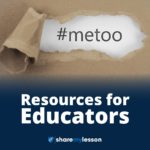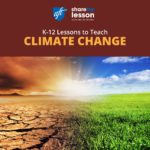From the colonial era, relations between European settlers and Native American nations have been complicated. In 1803 Congress authorized and funded an expedition led by Meriwether Lewis and William Clark for exploration of the region and for better knowledge about American Indians of the Northwest in order to develop trade. About 30 years later, the United States forced the removal of Native Americans from their lands to make way for white American settlement. Congress and the president made treaties with Native American nations, but those treaties were not always respected as the United States continued to expand into the west. After Native Americans enlisted and served in both World War I and World War II, Congress passed legislation to begin to address longstanding Native Americans claims against the United States Government.
Landmarks of American History and Culture
This Teacher’s Guide provides information and resources for integrating creative approaches to place-based history in K-12 humanities education. As tangible reminders of the past, memorials and monuments, as well as neighborhoods, historic homes, waterways, and many other sites, have the power to influence how we interpret contemporary society. The resources herein address public history and the disciplines that fall within the field; NEH Landmarks of American History and Culture programs and the resources that have been developed for educators; and access to sites included in the National Register of Historic Places and National Historic Landmarks. By introducing historic and cultural sites into the classroom setting, students can develop a greater understanding of the reality and prevalence of history in their local landscape.
Freedom of Speech
In this lesson, students examine the historical context and the drafting of the First Amendment by examining the motivations of the founding generation. Students will also examine various types of “speech,” such as symbolic speech, hate speech, and political speech, to address the scope of protections promised by the First Amendment and learn that speech can only be limited when it is intended to and likely to cause imminent violence. In each instance, students will explore when the government has some authority to restrict speech; areas of consensus among scholars, judges, and citizens; the strongest constitutional arguments on each side of contested issues; and U.S. Supreme Court cases that have addressed free speech rights.
Black History Month Lesson Plans on Nonviolence
The power of nonviolent actions and attitudes as a means to resist oppression and spur reforms is a recurring feature of democratic and democratizing societies. The School Violence Prevention Demonstration Program presents educators with lesson plans that explore the use of nonviolence in history, paying particular attention to the civil rights movement and African American history. Six lessons address: the 1963 Children’s March; the concept of nonviolence using primary sources and stories of participants in the civil rights movement; the power of nonviolence; the story of Rosa Parks; citizenship schools; how music can be used to achieve social and political change.
The Me Too Movement: Resources for PreK-12 Teachers and School Staff

The #MeToo and #MeTooK12 movement is an opportunity for schools to reflect on how to address issues of consent, sex education, relationships and undoing a pervasive culture of silence. April is also Sexual Assault Awareness month. The Share My Lesson team curated a collection of free resources to help educators with critical conversations and lesson planning, as well as school procedures and policies and opportunities for reflection.
The American Presidency: Core Documents
This collection of documents on the presidency begins with Alexander Hamilton’s commentary on the sections of the Constitution related to the executive branch and ends with President Barack Obama’s address to the nation defending his interpretation of executive authority under the Constitution to use force against the Syrian regime. The documents cover the executive’s role and the specific topics of presidential selection, term limits, and impeachment.
Position Papers: Whole Woman’s Health v. Hellerstedt
Two position papers address the question in the 2016 Supreme Court case Whole Woman’s Health v. Hellerstedt: Is a Texas law imposing certain requirements on abortion clinics unconstitutional?
Climate Change Lesson Plans & Resources

This curated collection serves as a great resource for educators to find a wide-range of relevant K-12 lessons on climate change, celebrating Earth Day or supporting young people as they continue to lead the conversation around the climate change crisis. What is weather? How does it impact people and the planet? Are there things we do that can address climate change?
“No Event Could Have Filled Me with Greater Anxieties”: George Washington and the First Inaugural Address, April 30, 1789
Phillip Hamilton’s “‘No Event Could Have Filled Me with Greater Anxieties’: George Washington and the First Inaugural Address” reminds us how precedent setting our first president was. Anxious that his lack of administrative experience might make his task as the executive of a new nation difficult, Washington nevertheless proved he was as expert at statesmanship as he was on the battlefield. Free registration for students and teachers required to access resource.
Presidential Inaugurations, Past and Present
Every four years, on the steps of the U.S. Capitol building, the newly-elected President of the United States is inaugurated. This event not only includes the president taking the oath of office, but also provides the opportunity for the new President to lay out the direction he hopes to take the country. By analyzing historic texts and visuals, students can find common themes as well as important differences when comparing different inaugurations.